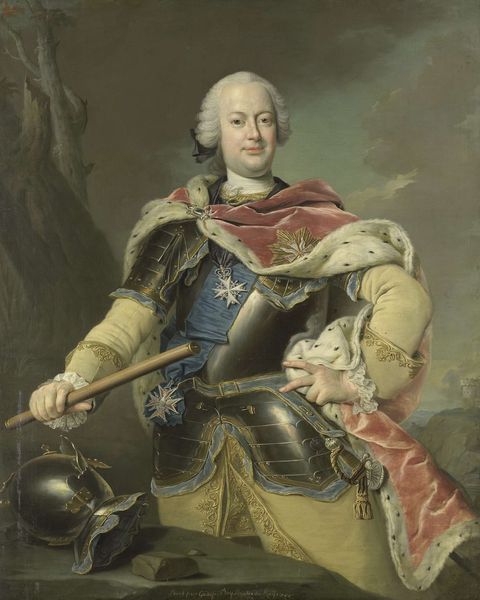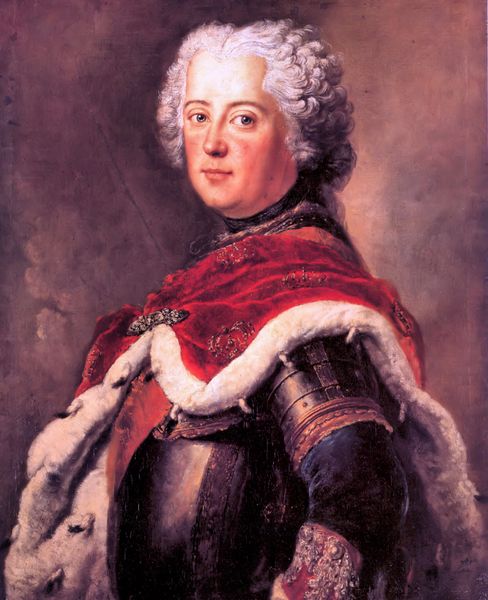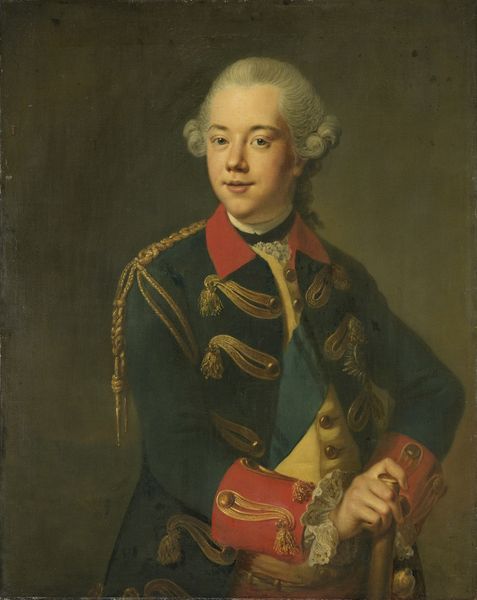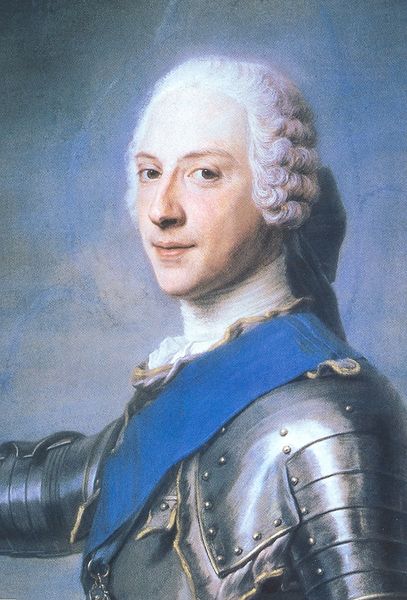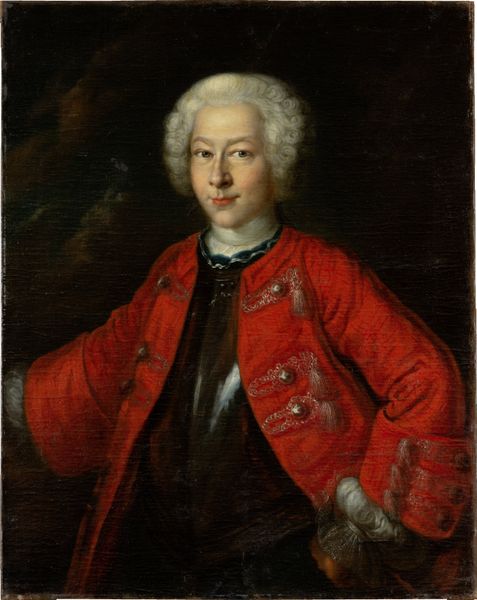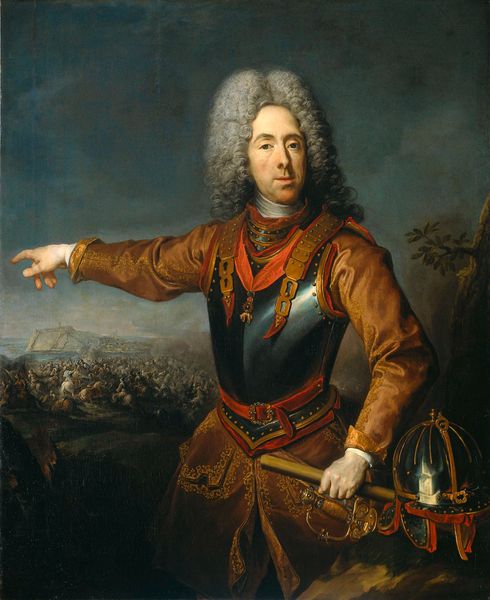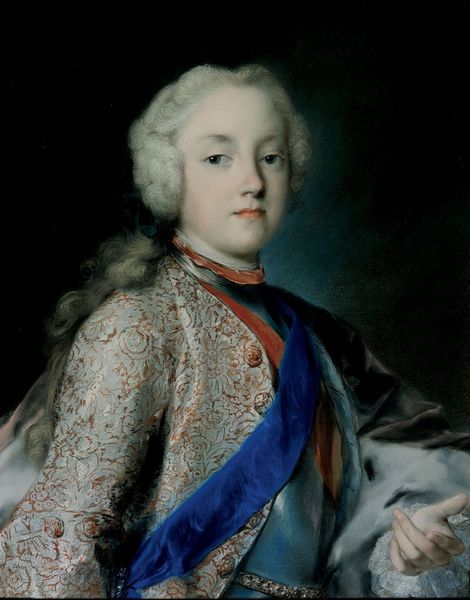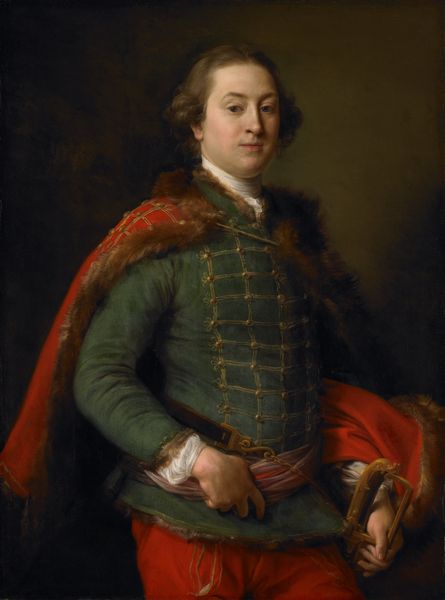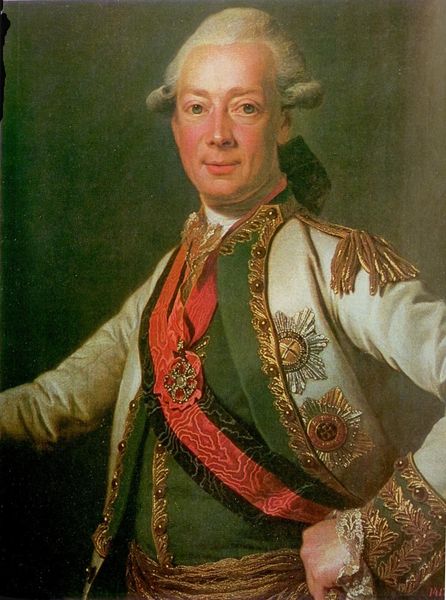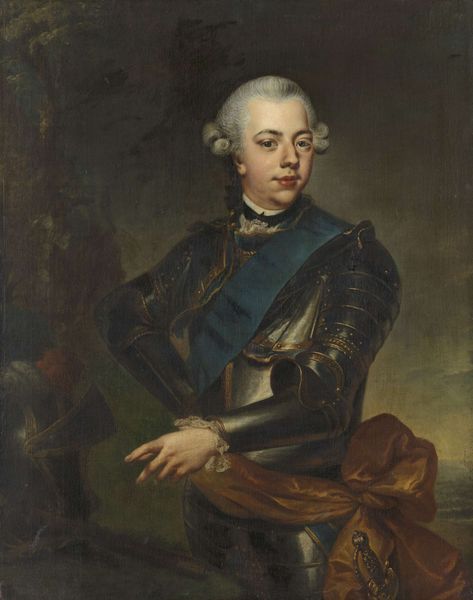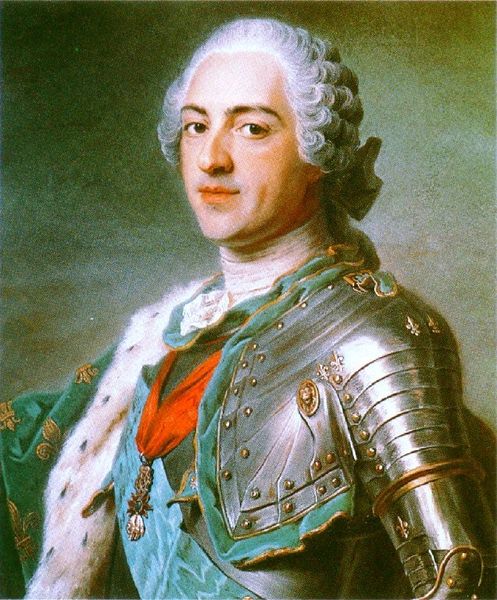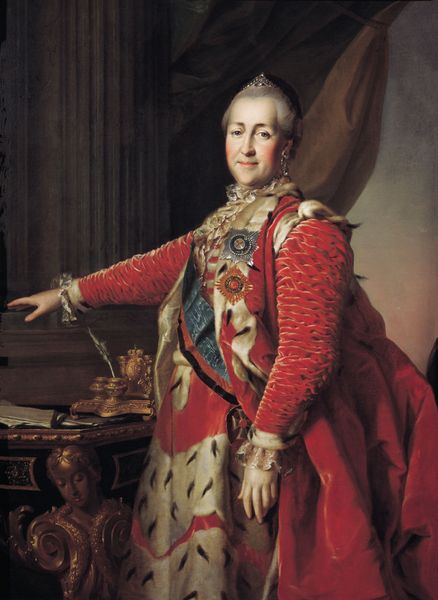
Dimensions: height 80.5 cm, width 65.7 cm, thickness 3 cm, height 89.1 cm, width 74.3 cm, depth 9.8 cm
Copyright: Rijks Museum: Open Domain
Editor: This is Antoine Pesne’s oil painting, "Portrait of August Wilhelm," dating from somewhere between 1740 and 1800. The Rijksmuseum is home to it now. He looks…formal, but also oddly vulnerable in his armour. What’s your read on this, as someone steeped in the era's context? Curator: The juxtaposition you noticed is key. This portrait speaks volumes about the performative nature of power in the 18th century. August Wilhelm is presented as a military figure, reinforced by the highly polished armour. But look closer; the slightly unfocused eyes, the soft rendering of the skin, the flamboyant wig - these soften the martial image, almost suggesting anxiety. How does that affect your interpretation of his status? Editor: It's almost as though the artist is hinting at the gap between the idealised ruler and the individual underneath. Was this kind of subversion common in portraits of the time, or were there specific factors at play here? Curator: Precisely. The rising merchant class, for example, desired representations aligning with enlightened values: virtue, intellect, sensitivity. While maintaining dynastic narratives, portraying vulnerability was another avenue through which legitimacy could be communicated. Power that's solely imposed is weak. The crown needed their subjects' support. And this image helped to convey that. Now how do you see it now, knowing a bit more about those social undercurrents? Editor: It changes everything. It’s less about inherent authority and more about actively cultivating and securing it. It makes me question every grand portrait I see. Thanks so much for your help! Curator: The pleasure was all mine. Analyzing a work through its socio-political backdrop brings it to life, doesn't it?
Comments
No comments
Be the first to comment and join the conversation on the ultimate creative platform.
